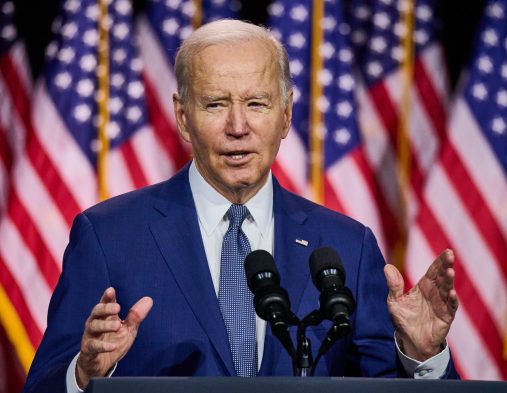US Allocates $105 Billion to Enhance Airport Airfreight and Traffic Control
In a bid to improve cargo flows through airports, the U.S. government has allocated substantial funding to enhance infrastructure and capacity at its gateways. Following investments in seafreight infrastructure, the administration is now focusing on airports and the recruitment of additional traffic controllers to alleviate congestion at busy hubs.
Last week, President Joe Biden signed the Federal Aviation Administration (FAA) Reauthorization Act, which earmarks $105 billion over four years to enhance air traffic control, airport operations, and infrastructure. This initiative aims to address constraints that have hindered traffic development, bolster system safety, and better prepare for future disruptions while accommodating growth.
Related Article: AFA Sponsors New Bill To Reduce Airport Truck Congestion
The package includes $19.35 billion for airport infrastructure improvement grants, with a portion dedicated to enhancing airfreight capabilities. “This is a major step forward in addressing the cargo congestion problem that has existed for quite some time at many airports across the country,” said Bob Imbriani, President of the Airforwarders Association (AfA).
During the pandemic, freight forwarders often faced long wait times at airports, sometimes up to seven hours. Despite normalized volumes, reports indicate that wait times still average around 2.5 hours. “This legislation is music to our ears,” said Brandon Fried, the AfA’s Executive Director.
In previous funding rounds, airlines received $25 billion of the $115 billion they requested from Washington, with no mention of cargo. Recognizing the need for dedicated advocacy, the AfA and the National Customs Brokers and Forwarders Association of America (NCBFAA) surveyed over 400 stakeholders in the air cargo sector, producing a 65-page white paper that successfully garnered Congressional support.
The legislation mandates the General Accountability Office to conduct a comprehensive assessment of U.S. air cargo operations over the next year. Although the exact allocation for air cargo improvements is not yet clear, estimates suggest $4 billion to $6 billion may be required, according to airport consultants involved in the project. Challenges vary by airport, including outdated road systems, labor issues, and antiquated technology.
A key objective of the legislation is to alleviate the overburdened air traffic control system. Last summer, IATA noted that U.S. airlines had to reduce schedules by 10% due to a shortage of traffic controllers. Airlines for America reported in January that the number of controllers was 3,000 short of FAA targets, 10% lower than in 2012.
Recruiting more traffic controllers could lift flight restrictions at airports like Washington National and improve aviation safety—a growing concern following recent incidents and near-misses, as well as quality issues at Boeing. The legislation also calls for advanced airport surface technology to prevent collisions.
Additionally, the legislation permits Boeing to extend production of its B767 freighter for another five years, potentially increasing demand for the aircraft in the near future.





Leave a Reply